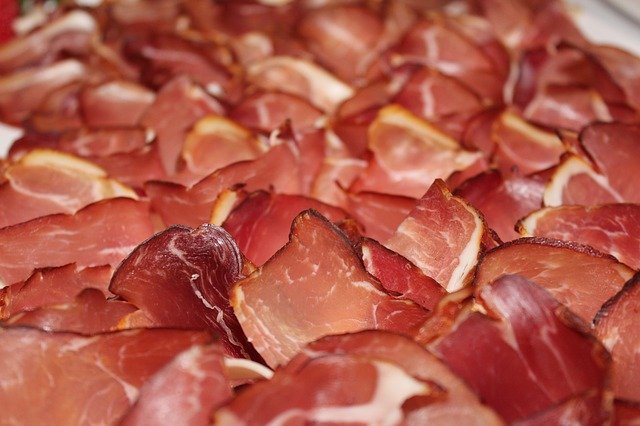
Consumers usually associate the Spanish "serrano ham" with the term "Spanish ham". There are Spanish ham in much more variants than what is offered in the department stores. The term "Serrano" actually means only the production of the ham leg, which is air-dried in a bodega. This succeeds particularly well in the arid plateaus of Spain, the "Sierra"; The result was the name of the ham.
The production of air-dried ham has a long tradition in Spain, since the 1st century BC so produced ham. The Spanish ham varieties differ in their quality by their origin, the meat used and the maturation period, which is why the taste of each ham specialties from Spain quite different. Common to all Spanish ham is that the clubs of the pigs are used at one go. Depending on whether the forelegs or hindlegs were used, it is referred to as ham (paleta serrana) or ham (jamon). Similar to the Spanish ham is air-dried Italian ham such as Parma ham.
For the production of ham from Spain, which is sold throughout Europe as "Serrano ham", the meat of normal, white domestic pigs is used. These are fed differently and ripened for different lengths, so that the following quality levels can be officially differentiated:
Plata (silver) - this Spanish ham has aged eight to eleven months
Oro (Gold) - Spanish ham with a maturity of eleven to fourteen months
Gran Serrano - the best quality with a maturity over 14 months
These qualities are very different, which is also noticeable in a price comparison: Plata is particularly favorable, the Gran Reserva significantly more expensive, but also better in taste.